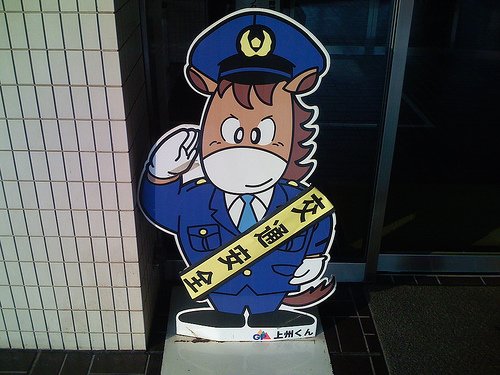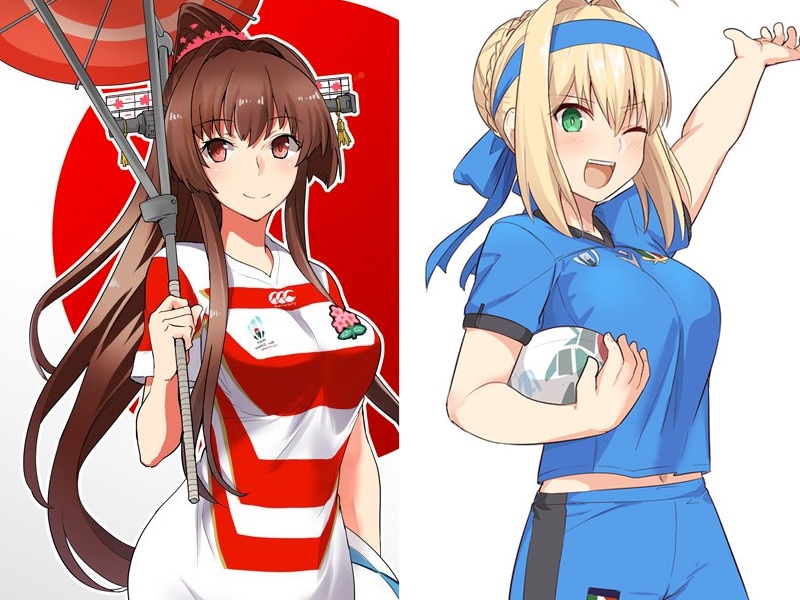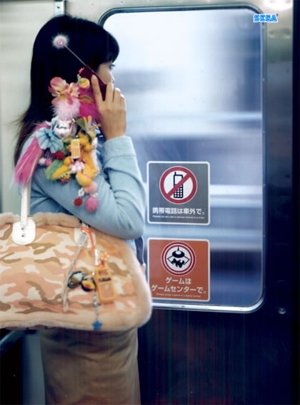The end of an era for this particular gaijin has come. In the past, foreigners were permitted to drive in Japan with an International Drivers’ License as long as they physically returned home at least once a year to get it renewed. Then a few years ago, the Japanese government started requiring that every resident change over to a Japanese license — a very reasonable requirement, and I’m going through that process now. No one likes making a trip to their local DMV, but doing driving-related paperwork in a foreign language is a real drag. To make matters worse, I have to take the driving test because the U.S. isn’t on the list of “blessed” countries whose residents can change from a foreign license automatically (too many differing standards for driving in the 50 states). Because the foreign population of my prefecture is a hodge-podge of people from around the world, I found myself taking the test alongside gaijin from Brazil, Peru, Vietnam, and a really big guy from Bangladesh. By the time we were done with the drivers’ test we were all good friends, babbling to each other in various accents of Japanese about how hard it was while we waited for the results to be announced. Japan is a very rule-oriented country, and there’s exactly “one” correct way to do most things, including driving a car — one correct order of adjusting your seat, mirrors and fastening your seat belt, one correct way to hold your hands on the wheel while you make turns. Predictably, I failed the driving portion of the test this time around — rats. (This little guy is Traffic Safety Horse, proof that even boring government offices can be “kawaii” in Japan.)

Next week starts Japan’s Obon (“oh, bone!”) break, which is a three-day Buddhist holiday to remember the souls of one’s ancestors. Much of Japan shuts down on August 13, 14 and 15th as people journey to their “jikka” (real home, i.e. their parents’ home or wherever their family’s Buddhist altar is located) to spend time with family members and pay a visit the family grave, or maybe attend a festival and do the Bon-Odori (“bone odor-ey”) traditional dance. Living in Japan for the past 15 years has taught me a lot about what the Japanese are all about spiritually. While I have to admit that I don’t know much about Buddhism itself, not being able to tell a Bodhisattva from a Bodhi tree or Amida from Queen Amidala, I have known the Japanese to really care about their ancestors, aka family members who have gone on ahead, to use a less cliched phrase. My wife regularly looks to her dead grandmother for guidance and protection, and every morning my wife or my daughter will burn a stick of incense at the family altar to let the dead known they haven’t been forgotten. Just as Christmas has grown into a big part of the culture of the West beyond its original meaning, many of these Buddhist traditions are practiced by all Japanese, even if they may of other religions. The Obon holidays are also a popular time to travel, and the rush of people headed for Narita International Airport officially started this morning. If you live in a place that receives many Japanese visitors like Hawaii, prepare to see a lot more of them over the next few days.
As you might imagine, what we call a kimono in the West has many variations here, such as yukata, a cotton kimono worn in the summer; happi, the short kimonos worn at summer festivals, often marketed to foreigners as “happy” coats; “hakama,” a formal kimono that’s similar to a tuxedo; or juunihitoe, the 12-layer kimonos worn in the Heian Period 1300 years ago. The word kimono is written with the characters ki (to wear, 着) and mono (thing、物), so it just means “something you wear,” and there are many similar words in Japanese, like tabemono (something to eat, e.g. food), nomimono (something to drink, e.g. a beverage), and so on. Only Japanese-style clothes are called with the name kimono; dresses, shirts and other Western imports are always called yofuku, or “Western clothes.” There’s a Japanese grammatical rule that makes unvoiced sounds (like ki) change to voiced (gi) when they are on the end of a compound word, which can be seen in words like karate-gi or judo-gi, what you wear when doing Japanese martial arts (often just called gi in English, which is a little weird sounding if you must know). One of my favorite flavors of kimono is the jinbei (JIN-bei), essentially a short- sleeved cotton kimono that’s equally good for use as Japanese-style pajamas (how I wear mine) as for wearing to your favorite festival or anime convention. J-List stocks several of these cool kimono varieties for our gaijin customers, including a great jinbei we got in stock today.















